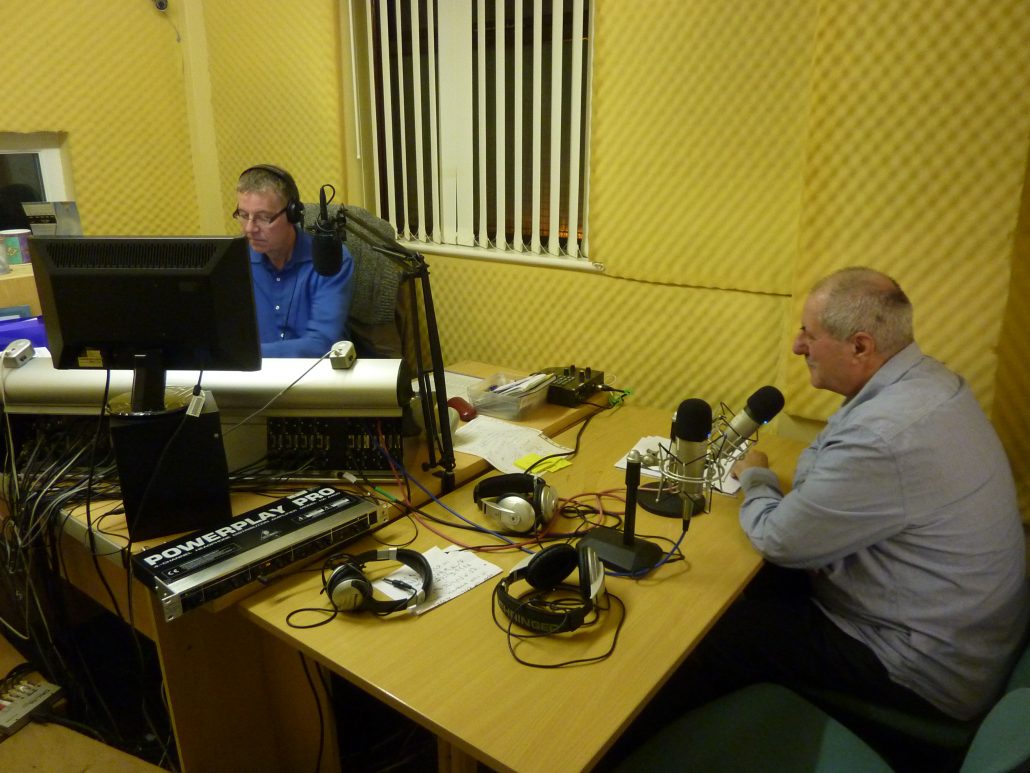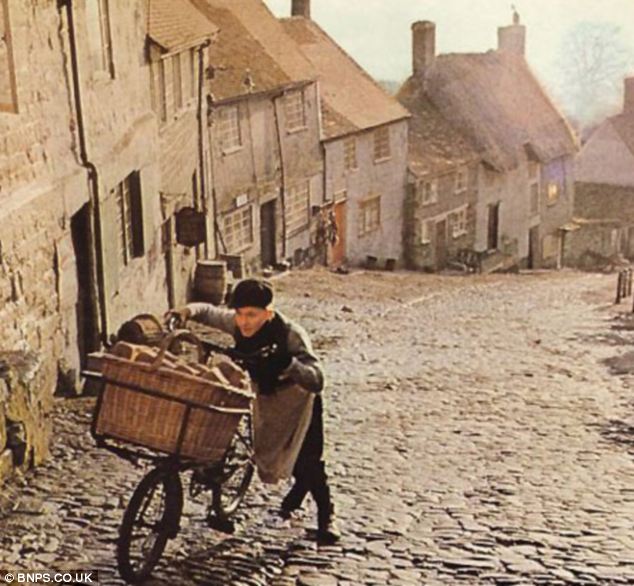A PRESENT TO THE FUTURE FROM THE PAST
A PRESENT TO THE FUTURE FROM THE PAST
ten tunes for these times we´re living in
by Norm (its the hope that kills you) Warwick
Steve (lift every voice and sing) Bewick

Norm: None of us will be too sorry to say goodbye to 2020, I guess, Steve, but as we move to the New Year do we have what Ian Dury would have called Reasons To Be Cheerful? Can we offer our listeners and readers any hope?
Steve: There´s always hope, Norm. We can always find hope in music and literature can´t we?

Norm: Yeh, I guess you´re right. As everyone knows I am a huige fan of the late John Stewart´s music and best of John Stewart´s lyrics always seemed to offer me codes to live by. Very often his lyrics contained aphorisms that encouraged me, inspired me and offered me a wiser perception of this world.
What I learned from those lyrics has stood me in good stead and one track has been proven so right during these covid crisis times. It has a verse that speaks of how
´day after day, one man alone,
carved out a face on a mountain of stone,
and though it took twenty years just to work on the eyes,
he had found him a reason to rise.´
I never questioned that sentiment that we are all better off with a purpose in life, but I must say my writing is the only thing that has kept me sane throughout 2020. I might not write very well, I might not have any readers, but whenever I write I feel better about life, because writing is my own reason to rise. It´s why I wake up every day, and writing for Sidetracks & Detours is the only thing that has kept me going through twelve months without concerts, without browsing through record stores and all the other activities I took for granted. So let´s listen an old John Stewart song, as a reminder of the need for purpose.
That version of Reasons To Rise was, in fact, performed by my old friend and John Stewart acolyte, Jeff McDonald from over in the States who, about forty years ago, recorded a song of mine called old Black Guitar Case, that I wrote with Colin Lever and Pete Benbow, in our group Lendanear. Readers of our pages have seen quite a few articles about that supergroup !?!
Steve: Readers will also know that contributors to Sidetracks & Detours, such as Michael Higgins and we ourselves, in our joint initiatives for radio and the written word, have looked long and hard at the emergence of the Black Lives Matter,…

Norm: and have generally applauded its ethos, even if questioning some its methodologies,….
Steve: so listeners might be surprised to hear me select a piece that seems to say I apologize for being Black! This poem acts as a satirical apology for all of the racism, obstacles and issues Black people have and do face. It is a very powerful performance by late great Oscar Brown Jr. singer, songwriter, playwright and actor, born October 10 1926; died May 29 2005. Whenever I hear this poem, after the anger dies down in me for what Black people have endured, I feel hope for the future! Let´s have a listen Oscar brown Junior performing I Apologise, from Def Poetry. See what you think
Norm: Wow,….,that´s a real twist. Readers of Sidetracks & Detours might remember that we recently looked at the ways writers can raise awareness of ridiculous stereotypes and prejudices by speaking in the voice of what literary critics call a ´guilty narrator.´ This is a brilliant variation on that theme, and sets the tone neatly for this article and programme I think. There are other ways of talking of hope, though, such as when Nina Simone sings “human kindness is overflowing,” on her rendition of Randy Newman’s I Think It’s Going to Rain Today, you feel that ripple of humanity’s warmth. Recorded for her 1969 album, Nina Simone and Piano, this gorgeous jazz version, with nothing more than the title’s aforementioned elements, will make the tears start to roll and the hairs stick up on the back of your neck. Have a listen.
Steve: I have another track once recorded by Nina Simone recording, Norman, but on this occasion it is performed by Nina’s daughter Lisa and performed with the original backing group that supported Nina. That, to me, represents new hope from a new generation.

Nina Simone’s biographer, Nadine Cohodas, says that Aunt Sarah in Four Women fits the archetype of “the mammy.” Simone presents Aunt Sarah as an older, dark-skinned woman who’s strong and long-suffering. But the mammy archetype is now considered an offensive stereotype of a Black woman who’s a cheerful, maternal type. The stereotype originated during slavery, and usually showed a servile woman focused on kitchen work who also played a maternal role with the white children in the house (think Aunt Jemima, still considered to be a racist image by many). Have you ever encountered that stereotype in the media or in your life?
This recording session of Sing The Truth actually took place in 2009, and present were the four women, Lisa Simone, Dianne Reeves, Lizz Wright, Angélique Kidjo as well as the Original Nina Simone Band: Al Shackman, (guitar) Chris White, (bass), Paul Robinson, (drums), Leopoldo Fleming, (percussion), Jeremy Berlin, (piano).
Challenging stereotypes is seen as a positive action these days more common than ever before amongst youth today. Therein lays the hope for our future expressed, in the track we´re about to play, by younger voices taking on Nina’s mantel.

for Crescent Radio, Rochdale
Norm: My readers, and even our radio audience, when we co-presented all across the arts on Crescent Community Radio for a few years, will be well aware of the high regard I have for the late, great Townes Van Zandt. He was so often described in the press as a writer of songs of sadness, but that was something of a simplistic view. In fact, my friend was a scholarly writer, steeped in the classics and familiar with great poetry. His songs often yielded to more than one interpretation, as his skill with words was such that he could employ nuanced vocabulary that walked a thin line, with a slightly different meaning on either side.
Our selection of songs here is, in some ways. all about keeping right on to the end of the road, but Townes was wise enough to know that the road is something different to every one of us, and the second verse of his song deals with that dichotomy. However, it is the word ´gone´ which is the most problematic, coming as it does as the very last word of the chorus and of the song. He describes the coming of winter and how it will turn the valley to wasteland, and his verses have us wondering if he is going to stay and fight the winter (or covid, or racism or evil) or whether he will seek pastures new in a physical sense. He seems to make up his mind but that line of ´come the morning, ´I´ll be through them hills and gone´ might signify neither hope nor expectation but, instead, the ultimate surrender. Of course, listeners might hear what we are about to play and think the song works as a simple love story, too.
Steve You might not ever need to do so in Lanzarote but here in the UK we find ourselves sometimes even just hoping for a change in the weather, so let´s move from a feeling of snow to a shaft of sunlight. Now consider, Norman, how feelings about grief following loss and the strides we make to reconcile that loss, and move on, show how we perhaps are enabled to do this by the legacy of the deceased giving, once more, hopes for our future. Here are three such examples.

Recorded in 1963, right after President Kennedy’s assassination, and the night the singer Bobby Hebb’s brother was killed in Memphis, Tthe song was eventually released in 1966. It reached #2 in the charts, and is considered by BMI to be one of top 100 songs ever. That song was known as Sonny.
The opening words were,
“Sunny, yesterday my life was filled with rain
Sunny, you smiled at me and really eased the pain
Now the dark days are done, and the bright days are here
My Sunny one shines so sincere
Sunny one so true, I love you.”
Consider now a composition copyrighted in Miles Davis’ name in 1963. This song is called Solar, meaning the sun and through the sun our regeneration. the recording we are going to play features; Miles Davis: trumpet, Dave Schildkraut: alto saxophone,Horace Silver: piano, Percy Heath: bass and Kenny Klarke: drums
However, some musicians and others believed that it had been written by Wayne Shorter. Then, it was known by the title Sonny, after trumpeter Sonny Berman, who also played at the session. Wayne Shorter is believed to have written Sonny when he was part of Woody Herman’s band in 1946.
The melodies of Sonny and Solar are the same, as our listeners will have identified. Miles Davis altered the opening, major chord of Wayne’s composition by making it minor. Davis died in 1991 the first two measures of the composition adorn his tombstone.
There is, however, no connection between Hebb’s Sonny and the latter Shorter’s Sonny, other than mere coincidence.
But that might be so with Shorter’s Sonny and Miles Solar. Nevertheless, it provides a nice piece of hope and serendipity for our imagined collection.

former home of Bolton Wanderers FC
Norm: Strangely enough, my next selection also has a somewhat cloudy origin. it is, though, a piece of hopeful music that I have actually sung a thousand times. Pete Seeger has a goosebump-inducing live version where the crowd joins in, Toots and The Maytals turned the song into reggae gold and Bruce Springsteen recorded a calming studio version, and my earliest memories of it are of me singing it, loud and proud and slightly adapted, at the old Burnden Park Stadium. Thousands of us would gather on the terraces behind the goal at the railway end of the ground, We would roar out the song straight into the faces of the opposition fans, who were only the length of a football pitch and a couple of hundred policemen away. We sang it to remind them we were ´Bolton Wanderers´ mighty white army´. Nevertheless, it is the Joan Baez rendition, as au currant as it was in the sixties, that still makes me weep the most. She famously sang the song at the March on Washington in 1963, and other early live versions capture that same powerful weight as well. If there’s a better song about human struggle, I would love to hear it immediately. We don´t need banners like we did then, but if all of us, all around the world formed a masked choir, and sang it as one, coronavirus would turn on its heels and run like hell, surely. So, please, readers and listeners, sing along.
Norm: Like We Shall Overcome, there’s a reason that A Change is Gonna Come became one of the most important songs of its era. This classic song signalled a shift in Sam Cooke´s discography which, up until this release, had largely avoided discussing social or political issues. Although the song eventually became an anthem of the Civil Rights movement, tragically, he was killed less than a year after the song was released so we didn’t get to see Cooke fully embrace this side of his nature.
The song is surely a signal of new Sidetracks and Detours he was about to take and its lyrics of a long-and-hard-fought battle in pursuit of a noble cause are still sorely needed, but now also serve as a reminder that we must also believe a change is gonna come in the fight against Covid 19. Let´s be reassured by Sam Cooke

Steve: The words of Sam Cooke’s A Change Is Gonna Come inspire hope in me, too. Here it can be heard performed by the Scottish Youth Jazz Orchestra, incorporating digitally the very voice of Sam Cooke. Truth, hope and reconciliation, these are words that we immediately associate with Nelson Rolihlahla Mandela and his vision for a better world. On the 102nd anniversary of his birth, the SNJO commemorates Mandela, Martin Luther King Jr, and Malcolm X through the spirited words and soaring music Sam Cooke’s ‘A Change is Gonna Come.’ So, let´s have listen to a miracle of technology as we listen to a different version of the same old song.
Norm: Yeh, that´s a message that definitely bears repeating.
Steve: So we´re heading into 2021 and perhaps we have found reasons to cheerful. There´s a whole new world waiting for us out there.
Norm: As always, you´re right Mr. Bewick,….and that reminds me that the piece of music that lifts my soul maybe higher than any other, and always fills me with optimism, is Dvorak´s New World Symphony,…
Steve: Or ¨The Hovis Advert´ as it became known,….
Norm: It did, that´s true,… a very sentimental advert of a nostalgia for what were perceived as simpler, better times. In fact The New World Symphony was properly called The Symphony No. 9 in E minor, From the New World, Op. 95, B. 178 (Czech: Symfonie č. 9 e moll Z nového světa), but popularly known as the New World Symphony. It was composed by Antonín Dvořák in 1893 while he was the director of the National Conservatory of Music of America from 1892 to 1895. It has been described as one of the most popular of all symphonies. In older literature and recordings, this symphony was – as for its first publication – numbered as Symphony No. 5. Astronaut Neil Armstrong took a tape recording of the New World Symphony along during the Apollo 11 mission, the first Moon landing, in 1969, that surely was hope for a new world. So, if it was good enough for the man in the moon it´s good enough for us. Let´s listen in.

Steve: The little lad used to push his byke up a steep, cobbled street didn´t he? It wasnt all flat caps and whippets, though. There was more to that advert than that
Norm: Yeh, the Hovis advert (left) took the music to a different place altogether because in fact listening to it again just now made sense of everything you said at the beginning of this ´show´ about how it is the legacy of the past that always provides hope for the future. Dvorak actually recognised the pentatonic scale as being present not only in the music of the Native American Indians, and the African Spirituals but also in traditional music from The Scottish Islands and heard all those musical traditions streaming into the building a New World.
Steve: So, have we sorted out the past, present and future, now, or are things still very tense?
Norm: I guess so, but in the words of a song I wrote more than forty years ago, ´today ain´t the tomorrow I dreamed of yesterday.´
Steve: Well, here´s a full reminder of today´s play list and a neat little bit of motivation to keep you and me, and our audiences, ever hopeful.
A PRESENT TO THE PAST FROM THE FUTURE
a Sidetracks & Detours / Hot Biscuits playlist
1 Reason To Rise by John Stewart
performed by Jeff McDonald
https://www.youtube.com/watch?v=KcAuao_FgWw
2 I Apologize by Oscar Brown Jr.
3 I Think It’s Going to Rain Today by Nina Simone:
Nina Simone – I Think it’s going to rain today – YouTube
4 Four Women by @ Nina Simone
5 Snowin´ On Raton by Townes Van Zandt
https://www.youtube.com/watch?v=L8zagvBb0-g
6 Sunny by Bobby Helm
7 Solar by Miles Davis
8 We Shall Overcome by Joan Baez
9 A Change Is Gonna Come by Scottish Youth Orchestra
10 New World Symphony by Dvorak
selections by Norman Warwick writer Sidetracks & Detours
Steve Bewick* Jazz Broadcaster
To submit a selection your own selection of songs of hope please attach as Word Document send them to
You may also include a brief biography and an accompanying article if you wish. All those published will be fully attributed.




Leave a Reply
Want to join the discussion?Feel free to contribute!